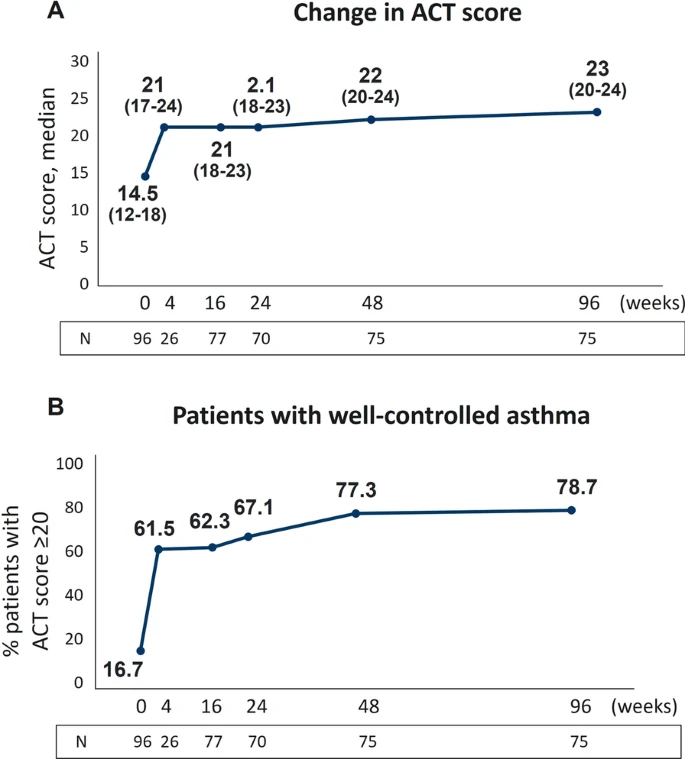Research – Open Access
Alessandra Vultaggio, Maria Aliani, Elena Altieri, Pietro Bracciale, Luisa Brussino, Maria Filomena Caiaffa, Paolo Cameli, Giorgio Walter Canonica, Cristiano Caruso, Stefano Centanni, Maria D’Amato, Fausto De Michele, Stefano Del Giacco, Fabiano Di Marco, Francesco Menzella, Girolamo Pelaia, Paola Rogliani, Micaela Romagnoli, Pietro Schino, Gianenrico Senna, Marco Benci, Silvia Boarino & Jan Walter Schroeder

Respiratory Research volume 24, Article number: 135 (2023)
Abstract
Background
The efficacy of benralizumab has been broadly demonstrated in severe eosinophilic asthma (SEA), but only few real-life studies evaluated its long-term effects. Here we present novel data from the ANANKE study in which a large cohort of SEA patients was treated for up to 96 weeks.
Methods
ANANKE (NCT04272463) is an observational retrospective Italian study investigating the key characteristics of SEA patients (collected during the 12 months prior to benralizumab initiation) and the clinical outcomes during benralizumab treatment (annual exacerbation rate [AER], lung function, asthma control, OCS use, healthcare resource utilization). A post hoc analysis was also conducted in groups of patients based on history of previous biologic therapy (bio-experienced versus naïve patients). Analyses were descriptive only.
Results

Before benralizumab initiation, evaluable SEA patients (N = 162, 61.1% females, mean age 56.0 ± 12.7) showed a median blood eosinophil count (BEC) of 600 cells/mm3 (IQR: 430–890). Patients experienced frequent exacerbations (annualized exacerbation rate [AER]: 4.10, severe AER: 0.98), with impaired lung function and poor asthma control (median ACT score: 14) despite 25.3% reported oral corticosteroid (OCS) use. Nasal polyposis was present in 53.1% patients; 47.5% patients were atopic. After 96 weeks since the start of benralizumab, nearly 90% patients were still on treatment; benralizumab dramatically decreased exacerbations (AER: − 94.9%; severe AER: − 96.9%), improved respiratory parameters (median increase in pre-bronchodilator forced expiratory volume [pre-BD FEV1]: + 400 mL) and asthma control (median ACT score: 23) while eliminating OCS in 60% patients. Importantly, benralizumab effects were either maintained or progressively improved over time, accompanied by a nearly complete depletion of BEC. Benralizumab reduced AER both in naïve (any AER: − 95.9%; severe AER: − 97.5%) and bio-experienced patients (any AER: − 92.4%; severe AER: − 94.0%).
Conclusions
Profound and sustained improvements in all asthma outcomes were observed with benralizumab. The correct identification of patients’ eosinophilic-driven asthma phenotype was essential to ensure the achievement of such remarkable results.
